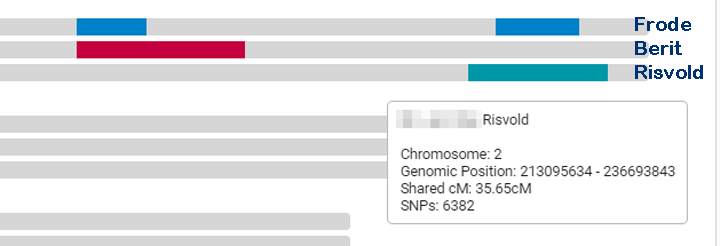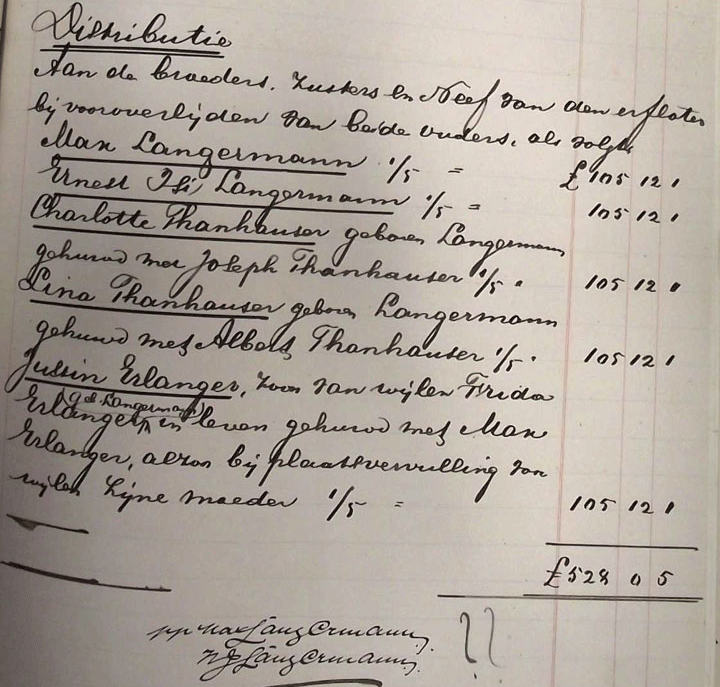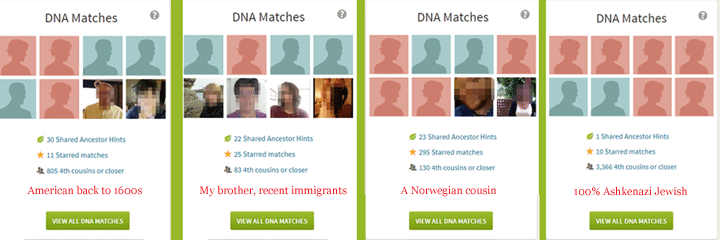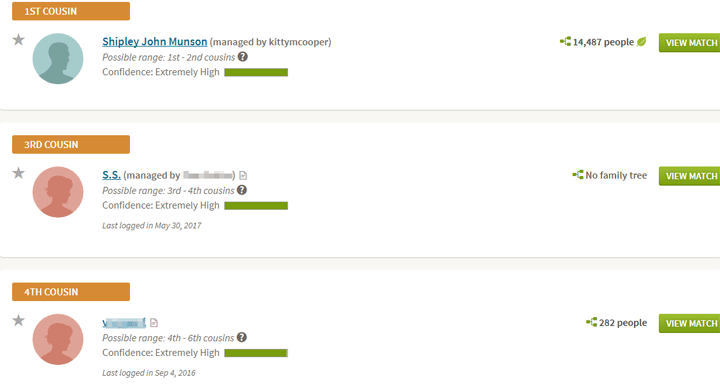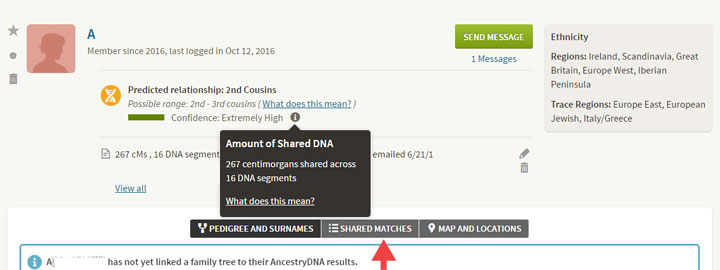The DNA results are in and they confirm that we have found the sperm donor, my late husband’s second cousin once removed. This cousin now has 8 children instead of none. Back then, donors were promised anonymity, but DNA testing has changed that; if their close family or cousins have done DNA testing, then it is likely that they can be identified. Continue reading
Tag Archive | DNA success stories
Finding a relationship with DNA segment data
Ancestry has spoiled us all with its tree and ancestor matching tools; so much so that I almost never look at the actual segment data any more. Ancestry does not provide that anyway. When autosomal DNA testing first came out, you had to look at the segments on each chromosome that you shared with your matches in order to figure out relationships. Personally, I kept a master spreadsheet of DNA segment data for all my Dad’s matches from the different sites (click here for the post on how to do that or here for all the posts on that topic).
The raw DNA data from Ancestry can be uploaded to a number of other sites in order to do chromosome comparisons and see the segment information: GEDmatch, Family Tree DNA ( ftDNA), and MyHeritage. You can see if you have good matches on those other sites without paying, but to unlock them on the latter two sites will cost a small amount. GEDmatch is free but it has extra tools that are available for a nominal charge and of course it can be used by law enforcement if you have opted in. Please do so and watch Cece Moore on the TV show the Genetic Detective to see why!
How is the segment data useful? It helps when you have many segments assigned to specific ancestors because of who they are matching with. Then when a new DNA relative appears you can figure out which line they are related on based on their shared segments with you and your relatives. Many people prefer to use the chromosome painting capability at DNApainter rather than spreadsheets to keep track of segments. I have been keeping my Dad’s sheet since 2011 so it’s just easier for me to add new relatives there.
I recently noticed that Dad had a 33.5 cM single segment match (I do not include the many segments less 7cM) on Family Tree DNA to a Norwegian named Jan Olav Risvold (who gave me permission to use his full name). Normally I ignore single segments, but this one was large and fell in a section of chromosome 2 which is well mapped for my Dad, so I took a look. Also Vold (Wold) is a family name, so perhaps?
One problem with segment data is that you cannot tell which side it is from without other relatives to compare to. Luckily for us, my brother and I have often inherited different segments at the same location from our Norwegian-American Dad. Therefore by comparing them to other cousins we can tell whether they are from his mom or his dad. Jan matches my brother on that segment but not me. Thanks to a 6th cousin, Frode, who shares 22cM at the same location with my brother and dad (see image at the top of this article), we had previously identified the ancestral couple that this DNA came to us from, our Fatland 5th grandparents, Ole (1696-1772) and Brita. on Halsnøy Island in Hordaland. They are our ancestors via Dad’s maternal grandad Henry H. Lee from Skjold farm in Etne, Hordaland.
South African Cousins! Thanks to DNA
Recently my maternal aunts, cousins and I had a strong DNA match at 23andme to a woman whose name was not familiar to me, Sharon, born in South Africa. This was exciting because I had thought that I had no family left there. I knew that my Jewish great grandmother Charlotte Langermann Thannhauser had had three brothers who went off to South Africa to make their fortunes. None of whom were thought to have any living descendants.
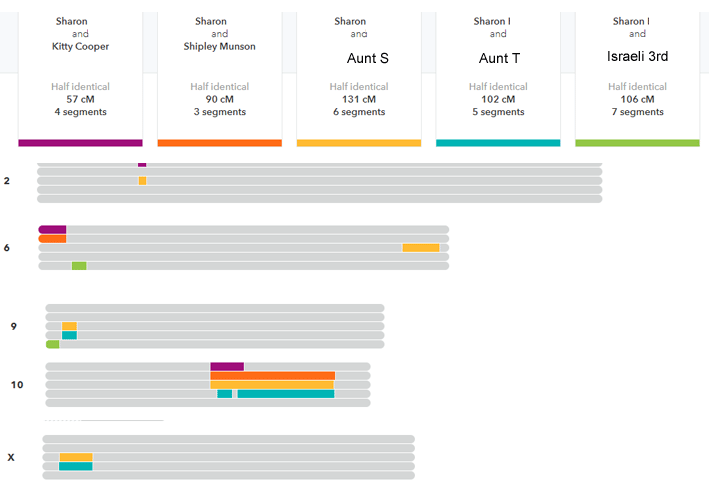
Extracts from the chromosome browser at 23andme comparing Sharon to my family
One of the brothers, Max Langermann, of Johannesburg and London, did become very rich but had no children of his own. Another, Jakob, also of Johannesburg, died in his 30s in 1898, unmarried, and his will names his five living siblings at that time as his heirs, each of whom received 105 pounds (about $20K today). The third brother, (Ernst) Isador, died in his early 40s, on board ship returning from India to his home in Salisbury, Southern Rhodesia (now Harere, Zimbabwe). His son Frederick was adopted by Max. My mother had told me that Fred was Jakob’s son but since Jakob died a few years before Frederick’s birth, that could not be. Documents I found seemed to indicate that Fred was Isador’s son but Frederick had no children of his own, So who could this new relative be descended from?
Since Sharon was listed as 28% Jewish and her mother has no Jewish DNA, she deduced that her father’s mother, whose name she did not know, had to have been Jewish. I sent her my Langermann family tree. Sharon consulted with her mother and sent me this:
Using Ancestry DNA hints to prove and disprove ancestors
With over 4 million DNA tests [as of 11 aug 2018 – 10 million], the Ancestry database has reached a tipping point where any tester with American ancestry will get some good cousin matches. How do these help prove an ancestral line? Well when your DNA matches multiple people descended from the same ancestral line, you can have some confidence in that part of your tree. Conversely, if you have no matches on a line, there may be a problem.
On your DNA home page, the center panel summarizes your match count. It shows the number of predicted 4th cousins or closer as well as the number of starred and green leaf ancestors. You can add stars to matches for whatever reason you wish. Only you and anyone you share your DNA results with can see them. Ancestry will indicate each DNA match that also has a tree match with you by using a green leaf.
Notice the big difference in the number of cousins between those with 19th and 20th century immigrant ancestors like my family and those with deep American ancestry. Also foreigners like my Norwegian cousin will have very few, while Jewish testers will have incredibly high numbers due to endogamy.
DNA Matches Page
Click on the green View All DNA Matches button to get to your DNA matches page. Or click on the starred or green leaf matches to see just those matches. On your match list page, every DNA match who also has a matching ancestor to you in their tree is marked with a green leaf indicating a hint.
When there is a green leaf, clicking on the View Match button will take you to a page that will show you a picture of the expected relationship pathway (images of that on page 2 of this article).
Many times matches with no tree will actually have a tree that is just not connected to their DNA. You can see that on the view match page. There you can select it in the dropdown menu, as shown below, to get the usual sideways display with a surname list. Sometimes you can even figure out where they fit in from it.
I like to make Ancestry do the work of checking my assumptions by adding the tentative line to the tree connected to the DNA test. I put a “??” as the suffix when I am trying out a set of ancestors so that anyone copying my tree is warned that it is a test. Strange characters in the suffix box do not seem to affect the matching. Another perhaps better solution is to make your tree private while you experiment. Or to use a second small private tree that you connect your results to when trying out a possible ancestral line. You can change what tree and who your DNA is connected to on the DNA settings page. Get there from the button with a gear on the top right of your DNA home page.
Here are some examples of my experiments.
Continue reading
An elusive 2nd cousin match at Ancestry DNA
When you are a genealogist with an extensive family tree and you get a 2nd cousin match at Ancestry DNA, you expect to be able to find the relationship fairly easily. Never mind that this is my 2nd cousin’s once removed MM’s kit and that the new match has no tree, surely such a close match will want be in touch and know more?
So I clicked on the View Match button. Sometimes there is is tree or two listed on the full match page that is just not connected to the DNA kit. No luck. Next I clicked on Shared Matches tab to see the matches MM had in common with this new cousin named A. The more relatives you have identified at AncestryDNA, the more useful this feature is.
MM has my brother and a number of known Goodsell relatives in her match list at ancestry. MM’s paternal grandfather, Charley Wold, is the brother of my Wold great-grandmother Maren. He married MM’s grandmother Martha Goodsell, among a number of other wives. We have lots of Wold relatives who have tested their DNA, but all at other companies.
The shared matches showed that the new 2nd cousin A was in common with several Goodsell relatives but not a match to my brother’s kit. Now I lost interest since A was most probably not my relative. A second cousin on the Goodsell side would be descended from the parents of Martha, so I put this match aside for another day. However it is best to contact treeless folk as soon as possible after their data comes in, while they are still logging in and looking at their results.
There are a few reasons people don’t have trees. The main two are that they are adopted or that they did the test just to see their ancestry composition. So I always craft a careful message that lets an adoptee know that I am willing to help, but hopefully does not scare off those less interested in genealogy.
